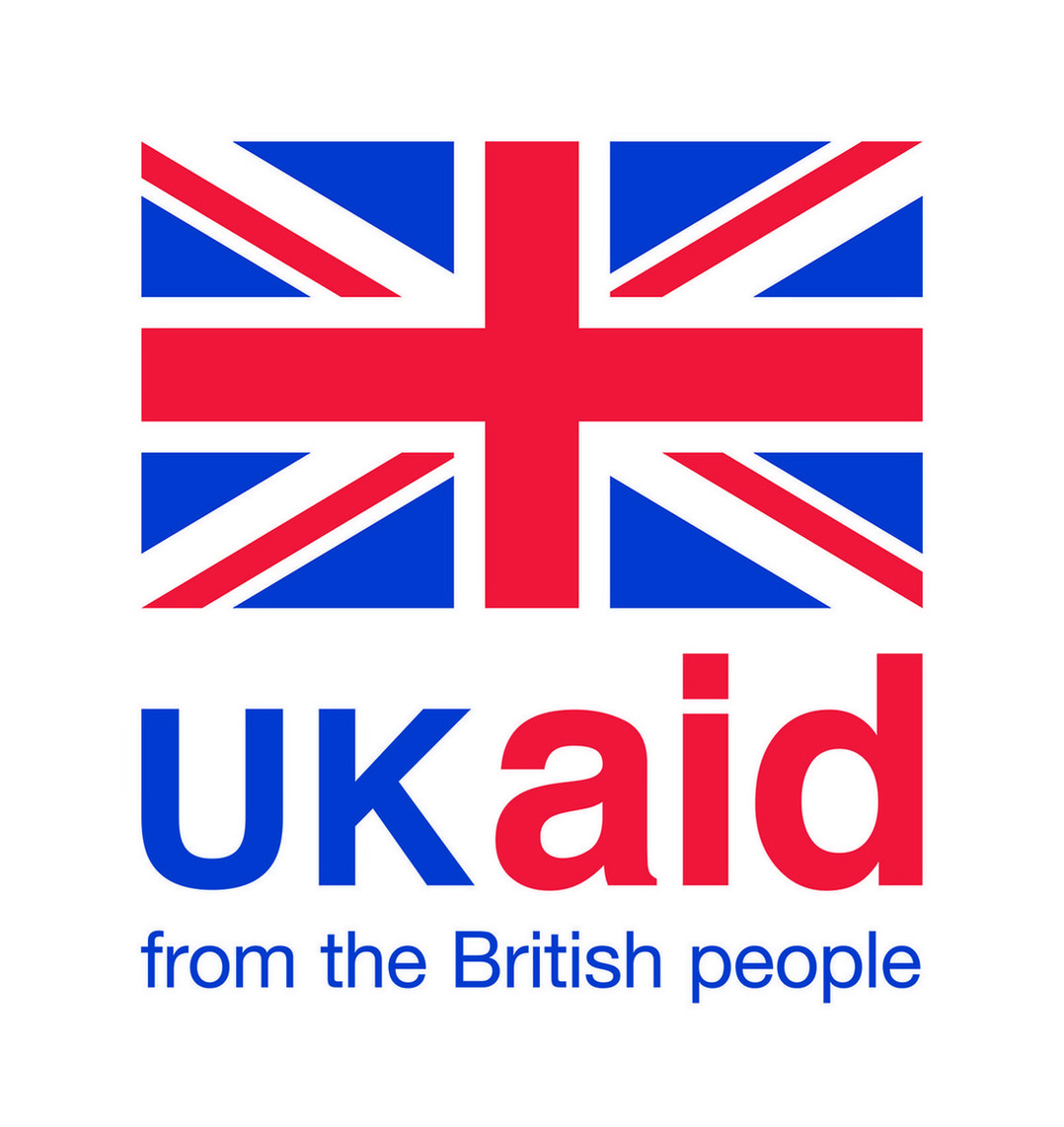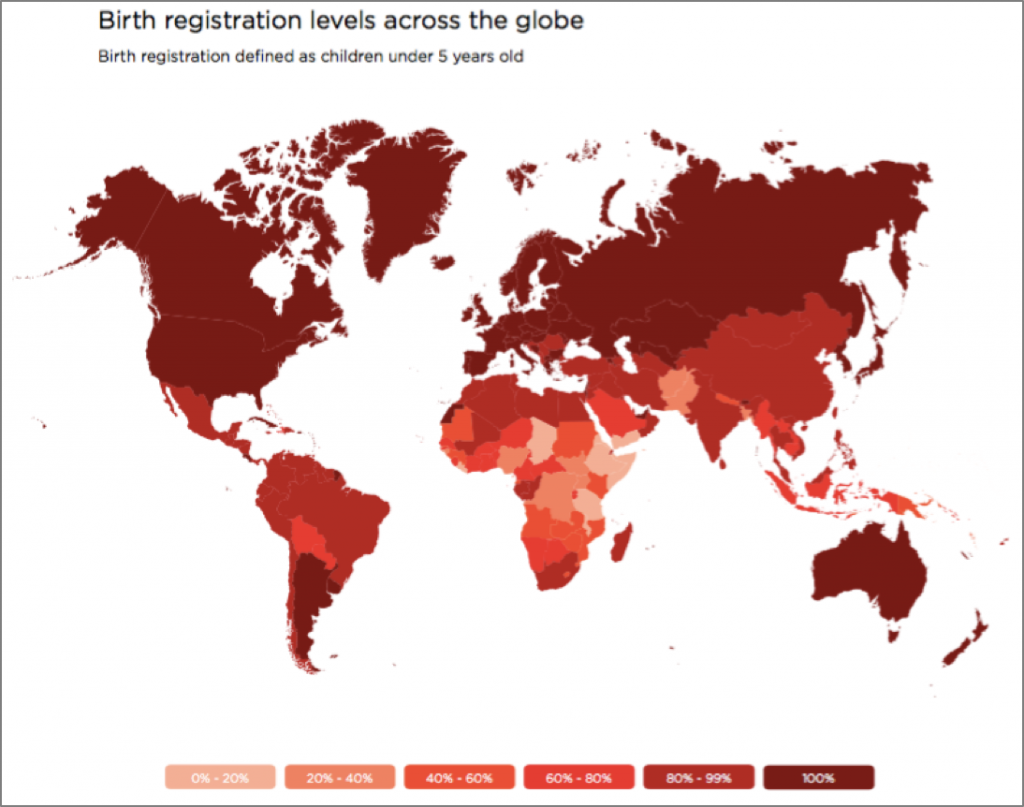It is estimated that globally one in three children under the age of five – roughly 230 million children in total – have not had their births officially registered. As a permanent record of a child’s identity and the first legal recognition of the child by its government, birth registration helps to bestow access to a number of vital services, including healthcare and immunisations, education and social protection. For national governments, birth registration is also a vital first step in establishing a robust Civil Registration and Vital Statistics (CRVS) system – an essential tool for effectively planning and monitoring the delivery of public services, development policies and infrastructure programmes.
The disparities in birth registration rates across the globe are quite staggering, with the World Health Organisation estimating that 99 per cent of unregistered births take place in developing countries. According to UNICEF, the lowest levels of birth registration are found in sub-Saharan Africa (41 per cent); in Eastern and Southern Africa, only 36 per cent of children are registered by their fifth birthday, while the rate in West and Central Africa is slightly higher, at 45 per cent. In South Asia, nearly one in three children remain unregistered.
In most countries, the children who are least likely to be registered or to possess a birth certificate are those that live in poverty and/or in rural areas. For the families of these children, the costs associated with birth registration tend to be prohibitive, both in terms of the direct costs (registration fees and the cost of a certificate) and the added expenses incurred due to travel and time away from an income- generating activity. A lack of awareness on how to complete the registration process, as well as misconceptions about the importance of registration are also common obstacles for parents. In these situations, mobile technology can play a transformative role in improving registration rates by: a) improving the accessibility and affordability of registration services, and b) empowering women to become more engaged in, and aware of, services that are vital to their newborns.
Last summer we produced a brief report on a mobile birth registration project supported by Tigo Tanzania, which is delivered through an innovative partnership led by the Government of Tanzania and UNICEF. By July 2016, the initiative had helped register 420,000 children through the development of a mobile app that local officials and health workers could use to digitally register births anywhere, and at any time – including, for instance, when the child is brought to a health clinic to be vaccinated.
In Tanzania, more than half of all births occur at home, but an estimated 99 per cent of children are taken to a local health clinic to be immunised. By allowing health facilities to act as official birth registration points, children across the seven project regions were given access to registration services at more than 2,500 locations, compared to the 42 official registration points that existed before the project was implemented. Whereas registration used to require parents to make three to four trips to the nearest government registration office, it is now possible for them to travel to their local health clinic to have their child vaccinated, register their child’s birth, and have a handwritten birth certificate produced all in a single trip.
One year after our publication, we are thrilled to hear that more than 1.6 million under-five children have now been registered and issued a birth certificate under this initiative. In 2017 alone, more than 900,000 children have been registered, and an additional 500,000 children are expected to register by the end of the year. Across the seven regions where the project is delivered, the overall level of registration and certification has increased from just over 10 per cent in 2012 (as per a nationwide census) to over 79 per cent.
The success of the project in Tanzania suggests that immunisation services could be used as an effective entry-point for birth registration in other markets – assuming, of course, that other key barriers to registration (e.g. outdated legal frameworks, registration fees, awareness among parents, etc.) are also addressed. Using data from both UNICEF and the World Bank’s ID4D global dataset, we looked at how vaccination rates in developing markets compare with birth registration rates. In the vast majority of countries, parents are significantly more likely to have their child vaccinated than they are to register their child’s birth. Rwanda, for instance, has achieved near-universal vaccination rates, yet more than a third of births are not registered. Considering the Rwandan government’s progressive policies towards digital services and relatively high mobile penetration, it is likely that an opportunity exists to increase birth registration by providing child health workers with mobile registration solutions. Other countries where vaccination rates are at least twice as high as birth registration rates include Pakistan, Bangladesh, Uganda, Nigeria and the Democratic Republic of the Congo (DRC).
The international community should also consider how to extend the utility of digital birth registration platforms to improve the collection of other vital statistics, such as marriages, deaths and various health outcomes. The World Health Organisation and Gavi, for instance, have proposed (here and here, respectively) that stronger links between vaccination records and birth registration systems would help alert healthcare providers to the presence of children that still need vaccinations, improve the process through which medicines are procured and distributed, and provide government ministries with more robust statistics on vaccination coverage. The Digital Identity team is currently investigating how mobile devices and technology such as Blockchain could be leveraged to record, link and securely share health records (including vaccination histories) in developing countries; there is emerging evidence from the US that blockchain use cases such as this show promise.
The initiative in Tanzania has also taught us how crucial it is to ensure that parents – particularly mothers – understand how and where they access birth registration services. That’s why in our latest report on Gender and Identity, we highlight the important role mobile technology is playing to help women become more engaged in, and aware of, the services that are vital to their newborns. For instance, a vital component of Rwanda’s mHealth system, called RapidSMS, provides a simple text-messaging tool that community health workers can use to collect real-time data on key maternal, neonatal and child health indicators during the first 1,000 days of a child’s life (from pregnancy to the age of two). RapidSMS has increased the number of births that take place at health clinics, where women have greater access to vaccination and registration services, and has also established a comprehensive, centralised database of births that can be shared by healthcare professionals.
By speeding up progress with regard to birth registration and the provision of unique identities to the most underserved, operators have already started to deliver sustainable identity solutions that have the potential to be taken to scale while delivering both social and commercial return. As we speak, the GSMA Digital Identity is working with Telenor Pakistan to determine how to make their birth registration initiative sustainable over the long-term; as part of this effort, we are working together to investigate whether the operator’s role as an intermediary can provide additional revenue streams through data, disbursements and links with other value-adding services, including maternal and child health advisory services provided via text message, and customized SMS alerts to remind parents of their child’s immunisation milestones. Be sure to check back at the end of the year to discover what we’ve learned.
This initiative is currently funded by the UK Department for International Development (DFID), and supported by the GSMA and its members.



